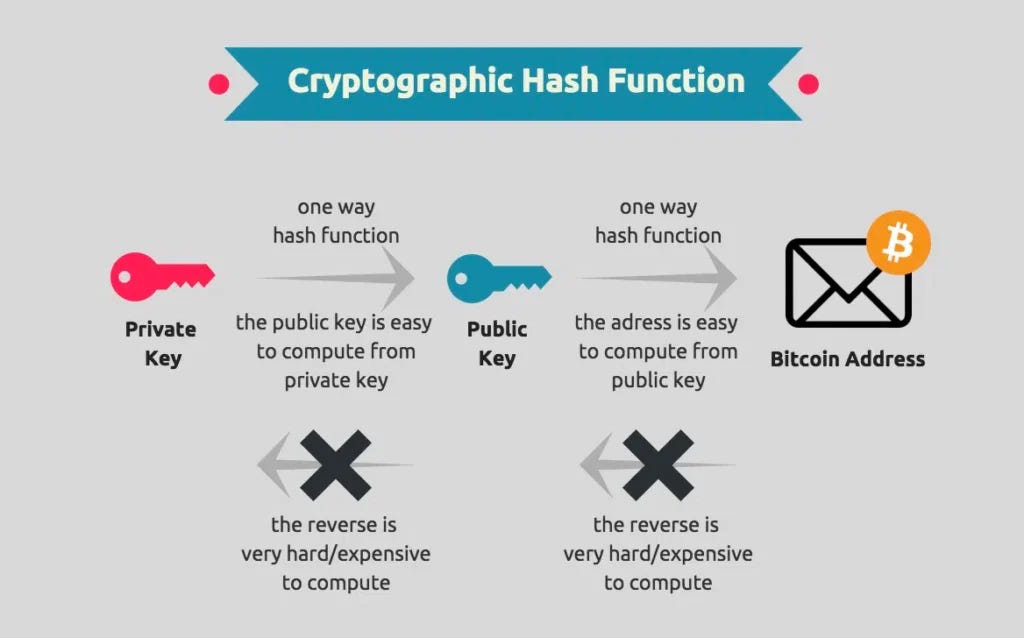What is a Web3 Wallet? A Comprehensive Comparison of Various Web3 Wallets
Understand everything about Web3 wallets: discover different wallet types,, and how to choose the best Web3 wallet for your blockchain and cryptocurrency needs.
Web3 wallets are users' keys to blockchain—enabling you to access and interact with decentralized applications (DApps), store digital assets (like NFTs), cryptocurrencies, and more.
In this blog post, I'll dive into everything you need to know about web3 wallets, including what they are, different wallet types, and why they're all crucial for enabling blockchain accessibility. I'll also briefly cover how to get started with a web3 wallet suited to your needs (or your users' needs).
What is a Web3 Wallet?
A web3 wallet (or crypto wallet) is a digital or physical wallet that stores your private keys, enabling interactions with blockchain networks and decentralized applications (DApps). It securely manages cryptocurrencies and blockchain-based assets, such as NFTs.
A private key is a unique code generated for each wallet and required for accessing and transferring the digital assets stored within. Without the private key, you cannot access or move your digital assets.
Web3 wallets also facilitate digital identity by providing users with unique cryptographic keys—known as "Private Key" and "Public Key"—used to prove ownership and control of digital assets.
Private Key and Public Key Explained
Private Key: Confidential information used to prove digital asset ownership. It signs blockchain transactions and is known only to the digital asset owner.
Public Key: Information used to confirm that a transaction was signed by the digital asset owner. It verifies transaction authenticity and can be publicly shared.
How Do Web3 Wallets Work?
Upon creating a web3 wallet, users receive a unique private key. This private key generates a corresponding public key, verifying transaction authenticity. These keys together enable secure, decentralized proof of digital asset ownership.
Web3 wallets also provide digital identity through a unique public address derived from the public key, used to receive digital assets. This address can be linked with decentralized name services, simplifying interaction (e.g., Ethereum Name Service (ENS), enabling memorable .eth domains).
Key Features of Web3 Wallets
Common essential features across web3 wallets include:
Multi-asset and Multi-chain Support: Supports various blockchain networks and digital assets (cryptocurrencies, NFTs).
Smart Contract and DeFi Interactivity: Enables seamless interactions with smart contracts, DApps, decentralized exchanges, marketplaces, etc.
Peer-to-Peer Transactions: Allows sending and receiving digital assets without intermediaries.
Security: Robust encryption methods to protect seed phrases and private keys from potential threats. Some wallets include warnings about malicious sites or smart contracts.
Anonymity: Users can create wallets without sharing sensitive personal data.
Types of Web3 Wallets
Not all wallets are created equal, with increasing options tailored to user needs.
Custodial vs. Non-custodial Wallets
Non-custodial Wallets: Users retain full control over private keys, ideal for decentralized exchanges (DEXs) and DApps. Examples: Trust Wallet, MetaMask.
Custodial Wallets: A third-party manages private keys for users. Convenient for newcomers but implies third-party trust. Examples: Coinbase Exchange wallet.
Hot vs. Cold Wallets
Hot Wallets: Connected to the internet, convenient but susceptible to hacks. Suitable for frequently traded smaller asset amounts. Types include desktop wallets, web wallets, and mobile wallets. Examples: Coinbase Wallet, MetaMask, Trust Wallet, Phantom.
Cold Wallets (Hardware Wallets): Offline storage providing high security for large asset amounts. Examples: Ledger, Trezor.
Smart Contract Wallets
Controlled by smart contract code (account abstraction), offering enhanced security features (social recovery, transfer limits, account freezes). Examples: Argent, Biconomy, Safe (formerly Gnosis Safe).
Multi-Sig Wallets
Require multiple signatures from trusted parties for transactions, adding security layers but potentially slowing down processes. Example: Safe (Gnosis Safe).
MPC Wallets
Utilize Multi-Party Computation to securely store and share private keys among multiple entities without revealing sensitive data. Examples: ZenGo, Fireblocks, Lit Protocol.
Top 10 Web3 Wallets
Popular wallets catering to diverse user needs include:
Coinbase Wallet
MetaMask
Phantom
Rainbow Wallet
Trust Wallet
Frame Wallet
Safe
Argent
Biconomy
ZenGo
Conclusion: Which Web3 Wallet is Best?
The best wallet depends on your needs:
Maximum Security & Long-Term Storage: Hardware or cold wallets (Ledger, SafePal, Trezor).
Convenience & Accessibility: Hot wallets available on mobile and desktop (MetaMask, Trust, Phantom, Rainbow).
High-Security Organizational Use: Multi-sig wallets.
User-friendly Web3 Onboarding & Recovery: Smart contract wallets and email-based solutions like DOSafe (our own wallet) and Magic.
Ultimately, the optimal web3 wallet aligns with your specific use case, desired security level, and provider trustworthiness. Ensure your wallet is open-source and has a strong security track record.
I hope this blog post clarified the different types of web3 wallets, their purposes, and which might suit your needs best.



